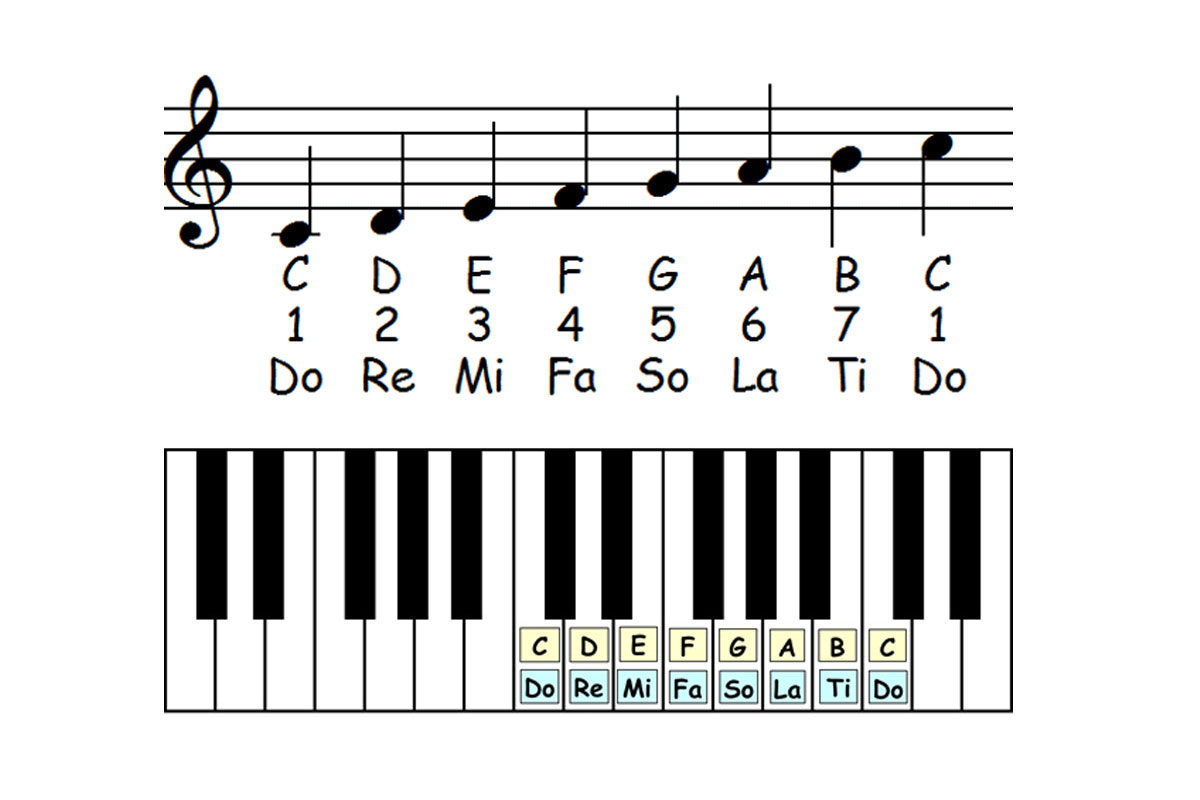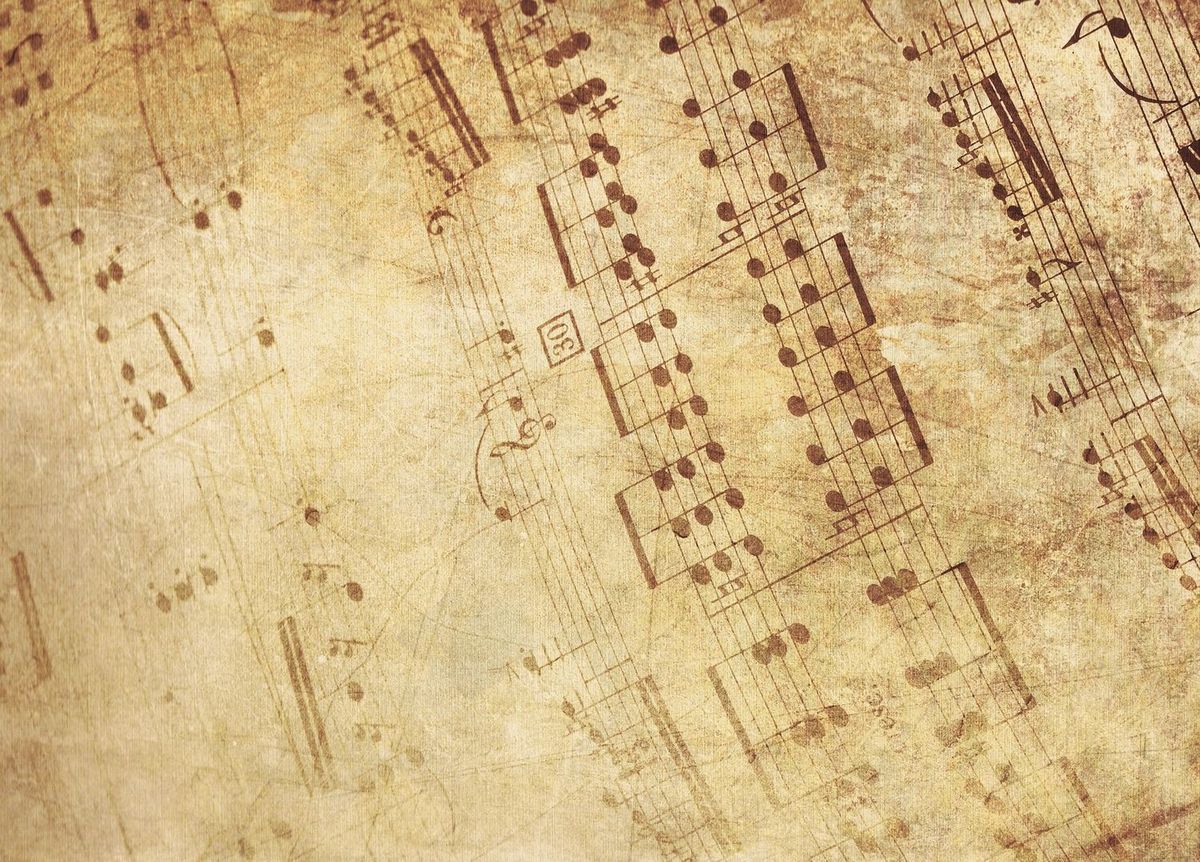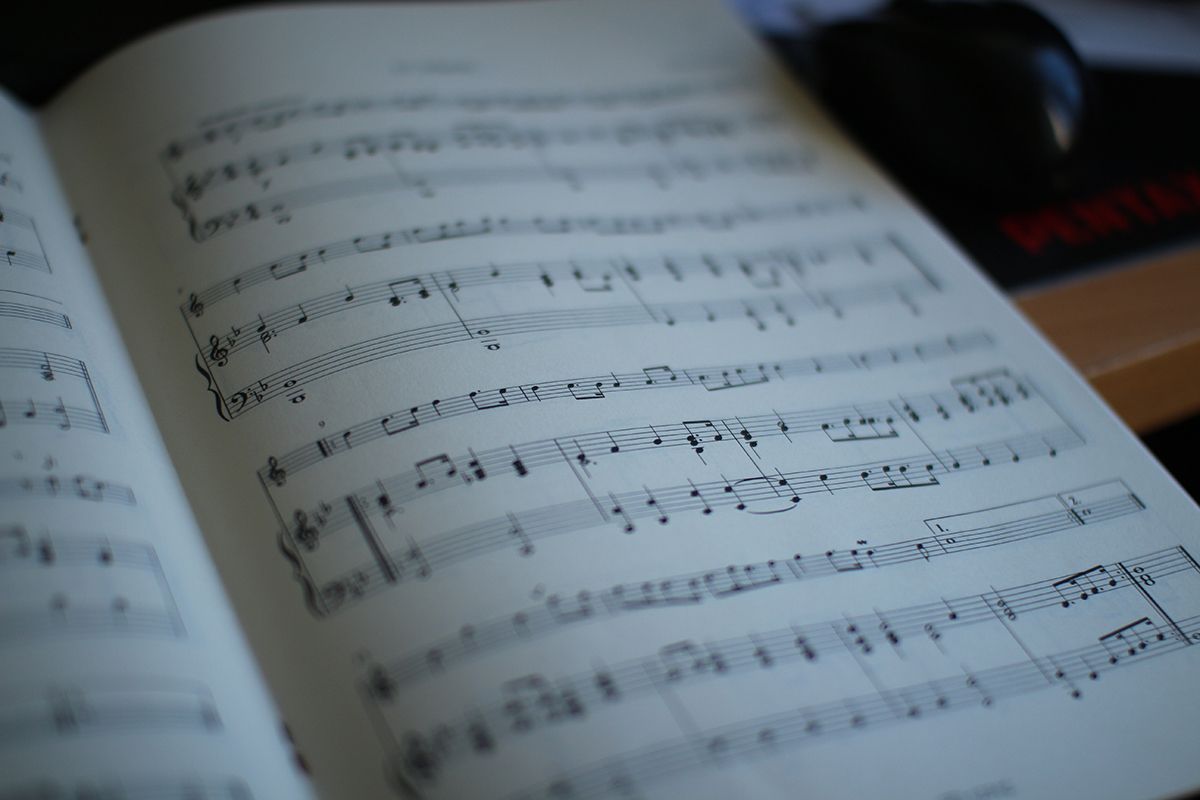Home>Production & Technology>Music Theory>What Is A Major Scale Music Theory


Music Theory
What Is A Major Scale Music Theory
Published: January 31, 2024
Learn the fundamentals of music theory with a focus on the major scale. Discover how to construct and apply this essential concept in your musical journey.
(Many of the links in this article redirect to a specific reviewed product. Your purchase of these products through affiliate links helps to generate commission for AudioLover.com, at no extra cost. Learn more)
Table of Contents
Introduction
Music theory serves as the foundation for understanding and creating music. It provides the framework to analyze and comprehend musical elements such as melody, harmony, rhythm, and structure. One of the fundamental concepts in music theory is the major scale.
The major scale is a crucial building block in Western music and forms the basis of many melodies, harmonies, and chord progressions we hear every day. Understanding the major scale is essential for musicians, composers, and songwriters, as it lays the groundwork for creating and shaping musical compositions.
Whether you are a beginner learning to play an instrument, a songwriter looking to write catchy melodies, or an aspiring music producer aiming to understand chord progressions, having a solid understanding of the major scale is paramount.
In this article, we will explore the definition, structure, intervals, key signatures, and practical applications of the major scale in music theory. By the end, you will have a comprehensive understanding of this fundamental musical concept that will greatly enhance your overall musical knowledge and abilities.
Definition of Major Scale
A major scale is a series of seven notes arranged in a specific pattern of whole steps (W) and half steps (H). It is characterized by its bright and uplifting sound, often associated with happy or positive emotions.
The major scale is built on a tonic (starting) note and follows the following step pattern:
- Whole Step (W)
- Whole Step (W)
- Half Step (H)
- Whole Step (W)
- Whole Step (W)
- Whole Step (W)
- Half Step (H)
The pattern remains consistent regardless of the starting note, allowing for transpositions to different keys while maintaining the same structure. This pattern gives the major scale its distinct sound and character.
For example, let’s take the C major scale, which starts on the note C. Applying the pattern, we get the following sequence of notes:
C – D – E – F – G – A – B – C
This sequence of notes forms the C major scale, commonly known as the Do Re Mi scale. Each note in the scale has a specific name, known as the degree of the scale. In the C major scale, the degrees are as follows:
I (Tonic) – C
II (Supertonic) – D
III (Mediant) – E
IV (Subdominant) – F
V (Dominant) – G
VI (Submediant) – A
VII (Leading tone) – B
The major scale is the most commonly used scale in Western music and acts as the reference point for many other scales and modes. It is the starting point for understanding chord progressions, key signatures, and the foundation for building melodies and harmonies.
Next, let’s delve deeper into the structure and intervals of the major scale.
Structure of Major Scale
The major scale follows a specific structure of whole steps (W) and half steps (H) to create its distinct sound. Understanding this structure is key to comprehending the intervals within the scale.
As mentioned earlier, the major scale consists of seven notes. To better visualize the structure, let’s assign numbers to each note of the major scale. We’ll use the C major scale as an example:
C – D – E – F – G – A – B – C
1 – 2 – 3 – 4 – 5 – 6 – 7 – 1
The structure of the major scale can be represented as:
- Tonic (I) – Whole Step (W)
- Supertonic (II) – Whole Step (W)
- Mediant (III) – Half Step (H)
- Subdominant (IV) – Whole Step (W)
- Dominant (V) – Whole Step (W)
- Submediant (VI) – Whole Step (W)
- Leading Tone (VII) – Half Step (H)
This structure remains consistent regardless of the starting note. For example, in the G major scale, the structure would be as follows:
G – A – B – C – D – E – F# – G
1 – 2 – 3 – 4 – 5 – 6 – 7 – 1
By understanding the structure of the major scale, you can easily identify and build major scales in any key.
Next, let’s explore the steps and intervals within the major scale to deepen our understanding.
Steps and Intervals in Major Scale
The major scale consists of specific steps and intervals that give it its characteristic sound. By understanding these steps and intervals, you can navigate and identify different notes within the scale.
The steps in the major scale are divided into whole steps (W) and half steps (H). A whole step is equivalent to moving two semitones up the musical alphabet, while a half step represents one semitone. The pattern of steps and intervals within the major scale is fixed and consistent:
- Tonic (I) – Whole Step (W)
- Supertonic (II) – Whole Step (W)
- Mediant (III) – Half Step (H)
- Subdominant (IV) – Whole Step (W)
- Dominant (V) – Whole Step (W)
- Submediant (VI) – Whole Step (W)
- Leading Tone (VII) – Half Step (H)
Let’s use the C major scale as an example to illustrate these steps:
C – D – E – F – G – A – B – C
I – II – III – IV – V – VI – VII – I
Using the half and whole step pattern, we can see that the steps between the notes in the C major scale are as follows:
C to D: Whole Step (W)
D to E: Whole Step (W)
E to F: Half Step (H)
F to G: Whole Step (W)
G to A: Whole Step (W)
A to B: Whole Step (W)
B to C: Half Step (H)
Understanding the steps and intervals within the major scale allows musicians to build melodies, harmonize chords, and create chord progressions in a systematic and intentional way.
Next, let’s explore the relationship between major scales and key signatures.
Key Signatures and Major Scale
Key signatures play a crucial role in music notation as they indicate the presence of sharps (#) or flats (b) in a given key. Understanding key signatures is essential for quickly identifying the notes and chords within a particular major scale.
In Western music, each major scale is associated with a specific key signature, which is written at the beginning of a musical score. The key signature consists of a series of sharps or flats placed on specific lines or spaces of the staff.
The key signature for a major scale is determined by the number of sharps or flats present in the scale. Each major scale has a unique key signature associated with it.
Let’s take the example of the G major scale, which consists of one sharp (F#):
G – A – B – C – D – E – F# – G
Key Signature: F#
The presence of the F# in the key signature indicates that all F notes in the G major scale are automatically sharped, even if not explicitly marked in the music notation.
Similarly, the C major scale has a key signature of no sharps or flats:
C – D – E – F – G – A – B – C
Key Signature: None (no sharps or flats)
With no sharps or flats present in the key signature, the C major scale contains only natural notes.
Key signatures help musicians read and interpret music quickly and efficiently. By recognizing the key signature, musicians can anticipate the notes and chords that are likely to appear in a given piece of music, saving time and mental effort during performance.
Next, let’s explore the relationship between major scales and the circle of fifths.
Circle of Fifths and Major Scale
The circle of fifths is a powerful tool in music theory that visually represents the relationship between major scales. It is a circular diagram that shows the progression of key signatures, moving in fifths (or fourths) around the circle.
Starting from the top of the circle with the C major scale, each key is a fifth (or fourth) interval away from the previous one in a clockwise direction. For example, moving clockwise from C, we go to G, which is a fifth above C. From G, we go to D, which is a fifth above G, and so on.
The circle of fifths not only outlines the key signatures but also reveals the number of sharps or flats in each major scale. As you move clockwise, each step adds one sharp or subtracts one flat from the key signature.
For example, starting with C major (no sharps or flats), moving to the right on the circle takes us to G major (one sharp), then D major (two sharps), and so on. Moving counterclockwise adds flats to the key signature.
This circle provides a useful reference for understanding the relationship between major scales. It also helps in determining the key signature for a given major scale and understanding the progression of sharps or flats as you move around the circle.
Furthermore, the circle of fifths is instrumental in understanding chord progressions and modulations in music. It reveals the closely related keys and provides a roadmap for chord changes and harmonic movement within a piece of music.
By understanding and utilizing the circle of fifths, musicians and composers can make informed decisions about key changes, chord selection, and harmonic progressions to create rich and engaging musical compositions.
Next, let’s explore how to find major scales on the piano keyboard.
Finding Major Scale on the Piano
The piano keyboard provides a visual and tangible representation of musical notes and scales. It is an invaluable tool for learning and understanding major scales. By familiarizing yourself with the piano keyboard, you can easily find and play major scales in different keys.
Let’s use the C major scale as our starting point since it consists of only white keys on the piano:
C – D – E – F – G – A – B
To play the C major scale on the piano, you would start with your right thumb (assuming you are using the right hand) on the C note. From there, you would ascend step by step, playing each subsequent white key until you reach the next C note, which is one octave higher.
For example, you would play the following sequence of keys:
C – D – E – F – G – A – B – C
It’s important to practice playing the major scales on the piano using the correct finger placement and hand position. This will ensure smooth and efficient execution as you progress to more complex piano pieces.
To find major scales in other keys, you would follow the same pattern of steps and intervals, adjusting for the presence of sharps or flats as indicated by the key signature. For example, to play the G major scale on the piano, you would start with your right thumb on the G note and play the following sequence:
G – A – B – C – D – E – F# – G
By exploring major scales on the piano, you can develop a strong sense of tonality and improve your overall understanding of music theory.
Next, let’s discover the common uses of the major scale in music.
Common Uses of Major Scale in Music
The major scale is one of the most prevalent and versatile musical elements, finding its application in various aspects of music. From melodies and harmonies to chord progressions and improvisation, the major scale plays a vital role in shaping musical compositions. Here are some common uses of the major scale in music:
1. Melodies: The major scale provides a framework for creating melodic lines and catchy tunes. Many iconic melodies in popular music are based on the major scale, contributing to their uplifting and memorable quality.
2. Harmonies: The major scale forms the basis for harmonizing chords and constructing chord progressions. It guides the selection and arrangement of chords within a key, creating a harmonically pleasing and coherent musical structure.
3. Chord progressions: Major scales help create chord progressions that evoke different emotions and moods. By harmonizing the major scale, musicians can build chord progressions that express joy, happiness, and other positive feelings.
4. Modulation: Modulation involves transitioning from one key to another within a piece of music. The major scale is often used as the starting point for modulating to related keys, providing a smooth and natural transition between musical sections.
5. Improvisation: Musicians use the major scale as a foundation for improvisation, allowing them to freely explore and create melodic variations within a given key. It serves as a roadmap for generating improvisational ideas and soloing over chord progressions.
6. Songwriting: The major scale is widely used in songwriting, both in composing melodies and structuring chord progressions. It provides a versatile and familiar palette of notes and harmonies for songwriters to craft their compositions.
7. Genre-specific applications: Different music genres incorporate the major scale in unique ways. For example, in classical music, major scales are commonly used for symphonic compositions, while in jazz, major scales serve as a foundation for improvisation and harmonic exploration.
These are just a few examples of the extensive role the major scale plays in music. Its versatility and widespread usage across genres make it an essential concept to grasp for any aspiring musician or music lover.
To conclude, the major scale is a fundamental element of music theory, serving as the cornerstone for melody, harmony, chords, and improvisation. Understanding and harnessing the power of the major scale allows musicians to create compelling and emotionally resonant music.
Conclusion
The major scale stands at the core of Western music theory, providing a fundamental understanding of melody, harmony, chords, and musical compositions. Its bright and uplifting sound is synonymous with happiness and positivity, making it a versatile and widely-used musical element.
Throughout this article, we have explored the definition, structure, steps, intervals, key signatures, and practical applications of the major scale. We have learned how to identify major scales on the piano keyboard and how they relate to the circle of fifths. We have also discovered the various ways the major scale is utilized in music, from creating melodies and harmonies to chord progressions, modulation, improvisation, and songwriting.
By grasping the concepts surrounding the major scale, musicians can develop a deeper understanding of music theory and apply it in their creative endeavors. Whether you are a beginner learning an instrument, an aspiring composer crafting melodies, or a seasoned musician improvising over chord progressions, the major scale remains a fundamental element that underpins musical expression.
Remember, music theory is not just a set of rules and formulas; it is a powerful tool that empowers us to understand, create, and communicate through the universal language of music. So embrace the major scale and let it guide you on your musical journey.
Now armed with the knowledge of the major scale, go forth and explore the vast world of music, creating beautiful melodies, harmonies, and compositions that resonate with your listeners. The possibilities are endless, and the major scale will be your trusted companion every step of the way.











